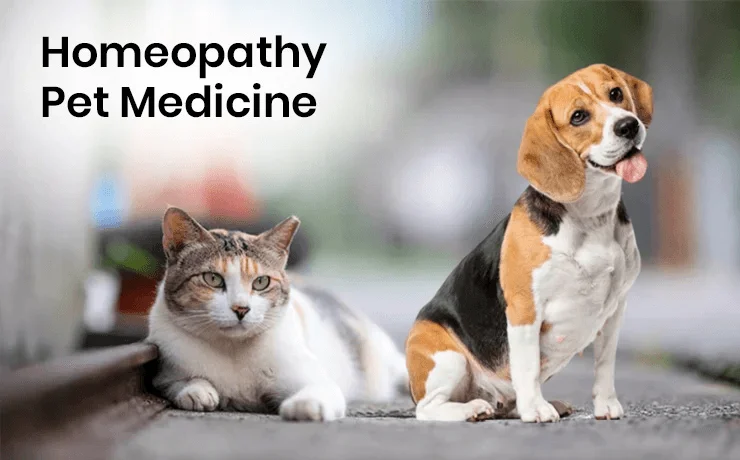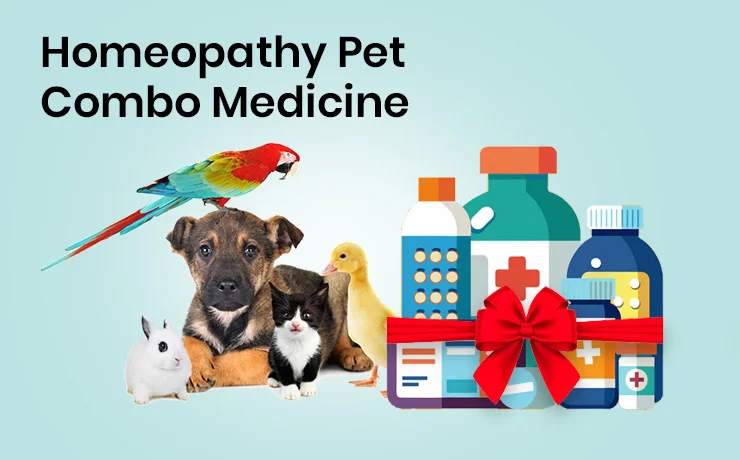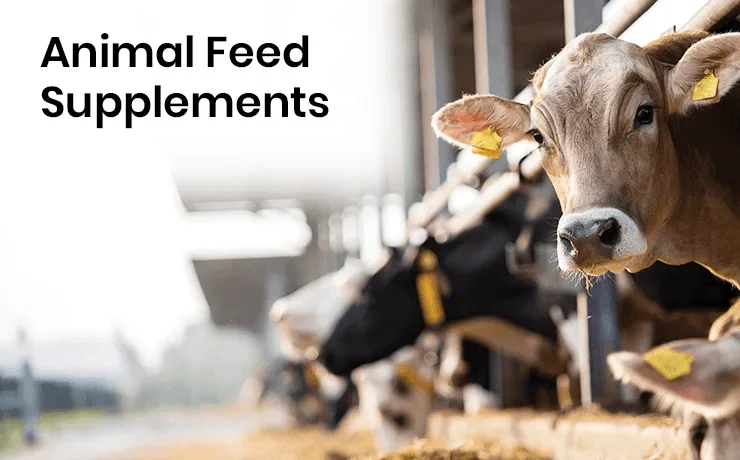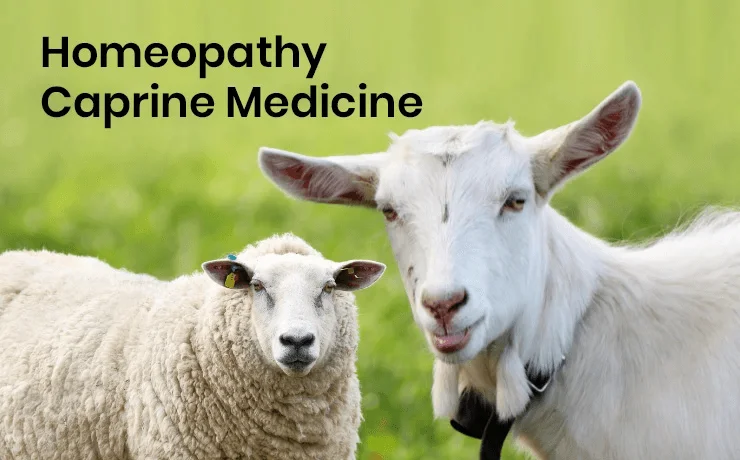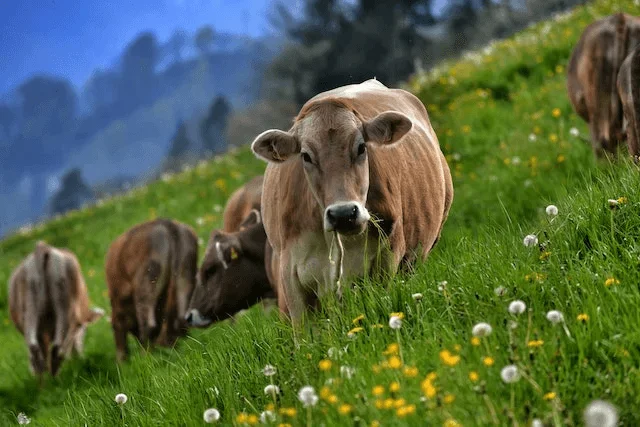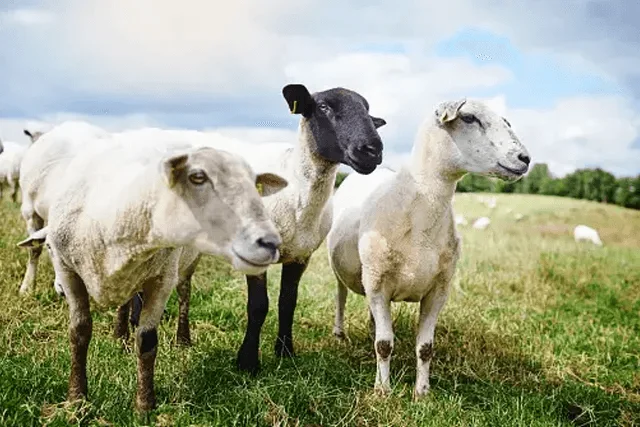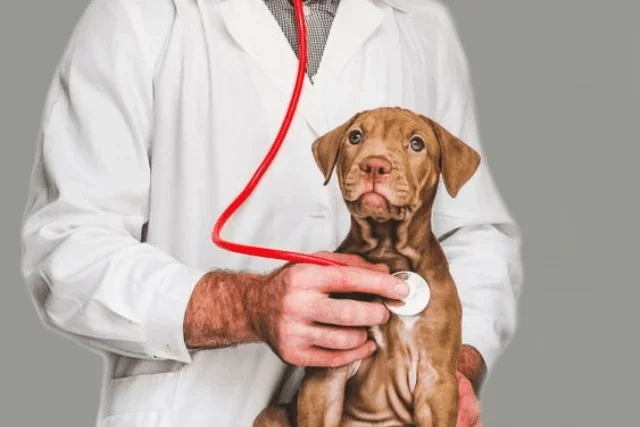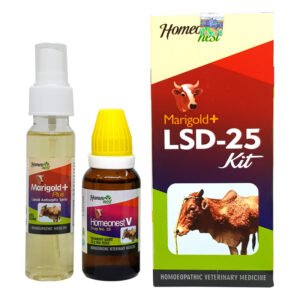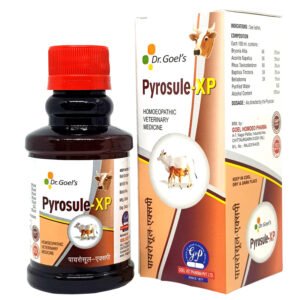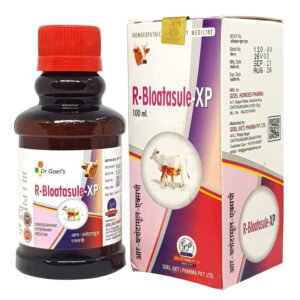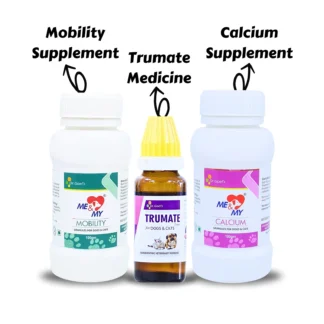MILKOGEN: Increasing Milk Yield

Milk is an essential part of our lives. Straight from childhood to adulthood, milk and milk products have played a pivotal role in human nutrition. Usually cow or buffalo milk is used as an alternative to other foodstuffs which is usually because milk is a complete food in itself. Since India is an agro-based country primarily, the majority of its economic growth is inevitably dependent upon agriculture and its allied fields such as livestock and dairy farming. Dairy farming has a stronghold in the Indian agro-sector and plays an important role, in fact, apart from economic reasons, cattle rearing has a significant standing in the cultural sector as well. As of 2020, despite the pandemic, the dairy sector has continued to boom and increase our nation’s GDP [Gross Domestic Product], with around 4.2% of the total GDP percentage being contributed by our Dairy Sector. Also, it is interesting to note that this sector particularly continues to grow annually at the rate of 4.9%, which is a really good indicator of economic growth and boom. According to the latest research conducted on the total value of the dairy sector of India, the dairy market in India reached a value of 11,357 Billion in the year 2020. There is no turning back and only an upward walk for this sector! In today’s blog let us uncover some of the facts about milk and milk yield and the factors affecting this.
THE MILK FACTOR: SOME INTERESTING FACTS ABOUT MILK.
Milk is defined as a lacteal secretion apart from colostrum obtained via the process of milking healthy cattle. Milk is usually obtained from mammals and is characteristic of this group of animals which includes humans as well. Milk is generally nutritious as it provides nutrition to the young ones since young ones of any animal species are incapable of fending for themselves.
- Milk has been considered to be a whole meal or whole food or, in other words, complete food as it has all the goodness and richness of common foodstuffs since it has a good amount of milk proteins, minerals, vitamins, and fat.
- Milk has calcium which is an essential nutrient especially important during the growth period as the growth of bones is directly connected to the levels of calcium-phosphorus.
- Apart from bones, calcium has a huge role to play in many cellular events at the microscopic level inside the cells, nerves, and muscles.
- Milk also contains some essential vitamins such as riboflavin, Vitamin B12, and Vitamin A.
- Also, milk is a rich storehouse of minerals such as calcium, as mentioned before, phosphorus, magnesium, potassium, and zinc which have their specific role tailored inside our cells and body systems.
- Milk is also rich in proteins such as casein, milk lipids, or fats, also it has milk solids and lactose sugar, which is essential for energy buildup.
How to increase milk production in cows in India. [Milk Yield]
MILK YIELD: FACTORS & FACTS
Milk yield is defined as the amount of milk obtained annually per cow per year and is usually a good indicator of the milking capacity of that cattle. Milk yield is usually dependent upon many factors, some of which are:
1. Breed
It is said that foreign breed cows yield a higher amount of milk as compared to indigenous breeds, but this thought has been challenged in recent times as the Indigenous cow breed Gir has demonstrated higher milk yield as compared to its foreign counterparts. Yes, breed does play an important role in the milk yield %.
2. Food & Water
Any decrease or abrupt changes in the daily food-water intake has hinted towards a negative deviation of milk yield as milk yield is dependent upon the food-water intake. It is important to note that the average milk yield is related not only to the quantitative basis of food intake but also to the qualitative factors of food intake. Quality of food has the upper hand as compared to the quantity of food. High quality fodder has proven to increase milk yield. Under-feeding cattle causes a drop in lactose % and may reduce the nutritional value of milk as well.
3. Genetic Variations
Now, despite the breed differences, there is an individuality factor which means that no two cows/buffalo would be at the same level of milking and milk yield at the same time throughout the milking season. Yes, they may have similar milk yield, but no two fingers are the same, and this applies to the milk yield of two cattle as well! Even if they belong to the same breed, this is all due to genetic variations and genes.
4. Milking Factors
Milk production increases as the lactation progress and reaches its peak level mid-lactation and then subsequently falls towards the end of lactation. Pregnancy, too, has an inhibitory effect on yield, also, the frequency of milking, the interval of milking, and the completeness of milking all play a pivotal role in milk yield and its fluctuation.
5. Environment and stress factors
Any abrupt changes in the environment, change of location, and transportation has shown to negatively impact milk yield. Also, slight variations and fluctuations in atmospheric temperature have a direct negative effect on milk yield.
6. Diseases
If there are any underlying concurrent diseases affecting the cattle it will inevitably affect the milk yield. Disease conditions such as ketosis, metritis, mastitis, milk fever, hypocalcaemia, retained placenta etc decrease the milk yield and have an overall negative impact on the overall health of the cow.
INTERNAL FACTORS CONTROLLING MILK YIELD.
Milk is produced by the mammary glands of mammals as mentioned before, but it has a complex mechanism behind it. There are certain chemicals in our bodies termed hormones that balance almost all the events occurring inside the body. They also play an important role in regulating various processes and cycles which helps to keep an individual healthy and well-balanced. It is interesting to note that these hormones are connected to external factors, and it can be stated firmly that internal and external factors are co-dependent entities and are not separated from each other. External and internal factors governing the milk yield and associated factors are the two faces of the same coin! Here are some interesting facts about hormones –
- Hormones regulate the growth of the body via growth hormones
- They aid in sexual functions, right from conception to parturition [birth giving] also, they aid in lactation [milking young new-born babies]
- Hormones play an important role in regulating metabolism via thyroid hormones,etc
- They also aid in various body systems such as: the digestive system, the immune system, the urinary system, the cardiovascular system,therespiratory and skeletal systems.
- Infact, all our organs, tissues and cells are inevitably dependent upon hormonal harmony. Hormones thus help our bodies to function normally, and properly in perfect union with other hormones.
THE HORMONAL HARMONY
Milk production has many facets to it. It is a process that is dependent upon the interplay of hormonal factors, nutritional factors, and neuro-physiological factors. The lactation process is usually dependent on galactopoietic [milk producing] substances or galactopoietic hormones such as prolactin, growth hormones, thyroid hormones, and steroid hormones.
1. Prolactin
This is the primary hormone that is essential for milk production. Every time milk is removed, this hormone gets stimulated to produce more milk. It acts almost as a balancer that responds to milk removed on the one hand and stimulates the production of milk on the other.
2. Growth Hormone
This hormone is essential to maintain lactation as it increases the synthesis of lactose, protein, and fats in mammary glands.
3. Thyroid Hormones
Thyroid hormones stimulate oxygen consumption, protein synthesis and milk yield and are essential for the maximal and optimal production of milk.
4. Oxytocin
Oxytocin hormone is essential for the removal or lets down of milk. Stimulation of the mammary gland via the suckling reflex of the calf is important for milk let down. Oxytocin is released from the hypothalamus and reaches the mammary gland via the blood stream ultimately resulting in milk removal from the glands.
MILK YIELD
Thus, the milk yield is dependent upon external environmental factors as well as internal hormonal and genetic interplay. To increase milk yield, there are many novel approaches as we target the natural system and stimulate milk production.

1. Dietary fix
Diet plays an important role in modulating immunity and health, thus, a few small changes in diets can help. Better fed cows have higher fertility, and improved conception rate and, in turn have a better milk yield as compared to cows fed on poor quality fodder. A good amount of carbohydrates, fats, essential fatty acids, and essential minerals like iron etc. play a pivotal role in the reproductive health of cattle.
2. Hormonal therapy
Hormone injections or therapies are adopted to keep in check the balance and cyclicity of the patient. It is not generally advised as hormones are a very crucial aspect of the body and are essential for various life processes. A slight change or imbalance in their concentrations may backfire negatively. It’s important to note that hormonal therapy must be initiated or stopped or regulated under the guidance of a veterinary doctor only as these hormones affects the reproductive health as well as various body systems and thus affect milking, milk yield, and overall health of the cow/buffalo.
3. Non-Hormonal Therapy: Homeopathic Approach
MILKOGEN is an excellent Homeopathic Veterinary Medicine used in Cows and Buffaloes to increase milk yield naturally. It is a natural replacer of oxytocin hormone without any contraindications or side effects but with a definite increase in the milk yield. It increases the milk quantity and fat percentage of the milk to the full potential of an animal.
- MILKOGEN increases the quantity of milk naturally in cows & buffaloes by stimulating the lactating tubules to a maximum level.
- When MILKOGEN is being used, there is no need for extra calcium supplementation because this medicine itself assimilates calcium from the feed of the animal to a high level.
- The level of increase in milk is maintained even long after the completion of the MILKOGEN course.
- A decrease in milk yield due to any underlying chronic illness can also be improved with MILKOGEN thus restoring the normal milk yield.
- MILKOGEN helps in letting down milk without any hormonal therapy when the calf dies and the animal refuses to give milk.
- Thus MILKOGEN is the most economical and efficient way of improving the quality and quantity of milk in cows and buffaloes.
Homeopathic Solutions For Cow and Buffalo
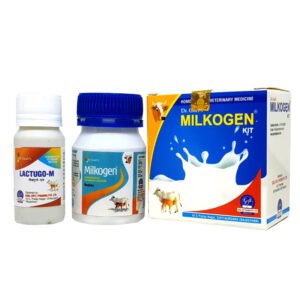 MILKOGEN KIT for Increasing Milk in Punganur Cow
MILKOGEN KIT for Increasing Milk in Punganur Cow
MILKOGEN Kit is an excellent Homeopathic Veterinary Medicine used in Cows and Buffaloes to increase milk yield naturally. It is a natural replacer of oxytocin hormone without any contraindications or side effects but with a definite increase in the milk yield. It increases the milk quantity and fat percentage of the milk to the full potential of an animal.
TEATASULE FIBRO GOLD KIT For Mastities Issue In Punganur Cow
TEATASULE FIBRO GOLD KIT is the best Homeopathic Veterinary Medicine for female animals in the case of chronic and clinical mastitis. TEATASULE FIBRO GOLD KIT is very effective in case of chronic or clinical mastitis when the udder is as hard as a stone, teats are shrunk with fibroids developed in the teats, and in teat cracks.
Marigold+ LSD-25 Kit For Lumpy Skin Diseases
Pyrosule-XP for High Fever in Cattle
PYROSULE-XP for CATTLE is the best Homeopathic Veterinary Medicine for Cattle that protects animals from infection. PYROSULE-XP relieves muscular and nervous pain that occurs during a fever and even decreases the severity of the fever.
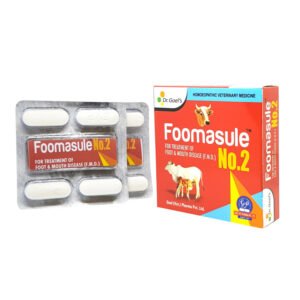 FOOMASULE NO. 2 for Foot and Mouth Disease
FOOMASULE NO. 2 for Foot and Mouth Disease

ProlapsGo For Prolaps Problem In Cattle
R.Bloatasule-XP For Bloating Issue in Cattle
Check out: – GOHEAL SPRAY
Check out: – HEMISEPT for CATTLE – 100ML

 Australian Shepherd
Australian Shepherd Beagle
Beagle Belgium Shepherd
Belgium Shepherd Bernese Mountain Dog
Bernese Mountain Dog Border Collie
Border Collie Boxer
Boxer Bulldog
Bulldog Cavalier King Charles Spaniel
Cavalier King Charles Spaniel Chihuahua
Chihuahua Cocker Spaniel
Cocker Spaniel Dachshund
Dachshund Doberman Pinscher
Doberman Pinscher Dogo Argentino
Dogo Argentino French Bulldog
French Bulldog German Shepherd
German Shepherd Golden Retriever
Golden Retriever Great Dane
Great Dane Himalayan Shepherd
Himalayan Shepherd Indie Dogs
Indie Dogs Labrador Retriever
Labrador Retriever Pakistani Bully
Pakistani Bully Pembroke Welsh Corgi
Pembroke Welsh Corgi Pitbull
Pitbull Pomeranian
Pomeranian Poodle
Poodle Pug
Pug Rottweiler
Rottweiler Shih Tzu
Shih Tzu Siberian Husky
Siberian Husky Yorkshire Terrier
Yorkshire Terrier Abyssinian
Abyssinian American Bobtail
American Bobtail American Shorthair
American Shorthair Balinese Cat
Balinese Cat Bengal Cat
Bengal Cat Birman
Birman Bombay Cat
Bombay Cat British Longhair
British Longhair British Shorthair
British Shorthair Burmese Cat
Burmese Cat Devon Rex
Devon Rex Exotic Shorthair
Exotic Shorthair Himalayan Cat
Himalayan Cat Maine Coon
Maine Coon Oriental Shorthair
Oriental Shorthair Persian Cats
Persian Cats Ragdoll
Ragdoll Scottish Fold
Scottish Fold Siamese Cat
Siamese Cat Siberian Cat
Siberian Cat Sphynx Cat
Sphynx Cat



















